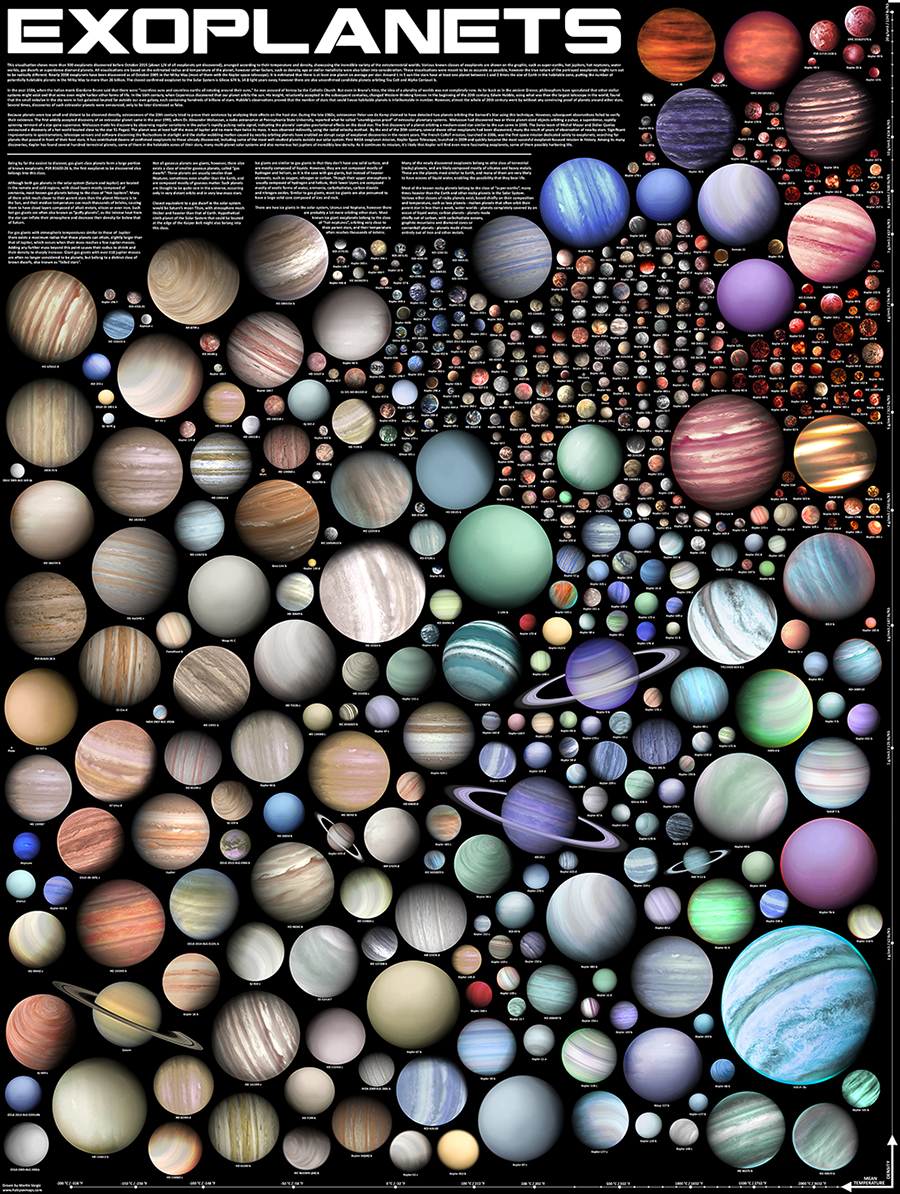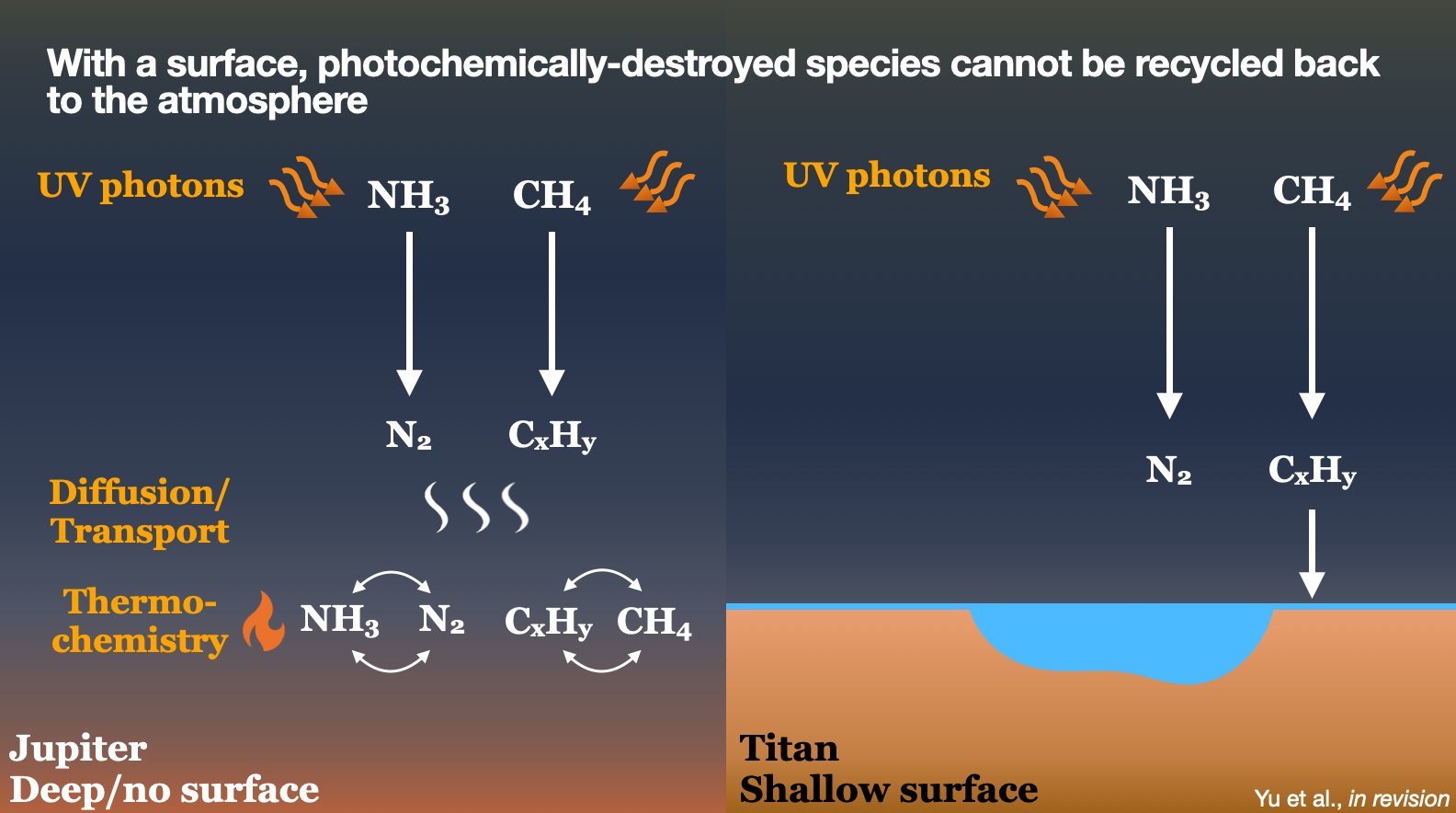The Kepler mission has detected thousands of exoplanets; however, most of them are unlike any planets in the solar system. With sizes in between Earth and Neptune, we still do not know if they are closer to the so-called “super-Earths,” with shallow surfaces located underneath thin atmospheres, or the so-called “sub-Neptunes,” with no tangible surfaces and thick atmospheres. Knowing where the surfaces are on these intermediate-sized exoplanets can also help us determine their habitability, as a liquid or a solid surface is likely necessary for sustaining complex lifeforms.

Unfortunately, the upcoming powerful telescope, such as the James Webb Telescope (JWST), cannot “see” the surfaces on exoplanet yet. The transit technique is powerful in seeing the atmosphere’s composition but does not probe very deep into an atmosphere. I am currently looking into the possibility of using solely atmospheric characterization data to tell if an exoplanet has a surface and where the surface could be located — without direct surface observations.
I was inspired by two planetary bodies in the solar system, Jupiter and Titan, and two trace species in their atmospheres: ammonia (NH3) and methane (CH4). In the upper atmospheres of Jupiter and Titan, photochemistry destroys NH3 and CH4 to form N2 and hydrocarbons (CXHY). Because Jupiter has no surface, the photochemically-formed N2 and hydrocarbons can be transported to the deep, hot part of the atmosphere, reforming NH3 and CH4. In the end, Jupiter still has lots of NH3 and CH4. Meanwhile, on Titan, there is a cold surface, and N2 and hydrocarbons just stay. Since NH3 and CH4 are irreversibly destroyed — eventually, Titan would be depleted in NH3 and CH4. The current amount of CH4 on Titan is likely due to outgassing.

Can we use the dichotomy of NH3 and CH4 abundances to tell if an exoplanet has a surface? The answer is yes: we tested this idea using a state-of-the-art photochemical model, KINETICS. I find more than NH3 and CH4! Actually, a range of species are all sensitive to the existence of surfaces: NH3, CH4, hydrogen cyanide (HCN), hydrocarbons such as C2H2, water (H2O), carbon monoxide (CO), and carbon dioxide (CO2).
Another interesting thing I found is that different species are sensitive to different surface levels. This is because the sweet points (temperature and pressure) where a species can be fully reformed differ for carbon and nitrogen species. For example, NH3/HCN are sensitive to surface shallower than 100 bar, and CH4/C2H2/CO/CO2 are sensitive to surfaces shallower than 10 bar.
Giving this result, I made a flowchart that uses atmosphere characterization to tell if a K2-18b-like exoplanet has a surface or not. The paper can be found here (pay-walled) or here (no paywall). I also wrote a popular Twitter thread that summarized this work and UniverseToday wrote us a nice article as well.
I am looking forward to expanding upon this proof-of-concept study and explore the surface identification for more exoplanets with a wide range of planetary parameters — to get ready for the JWST data!
